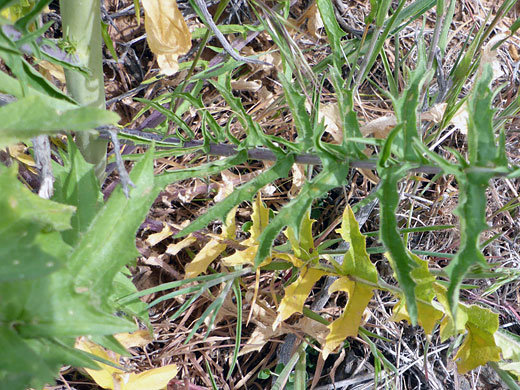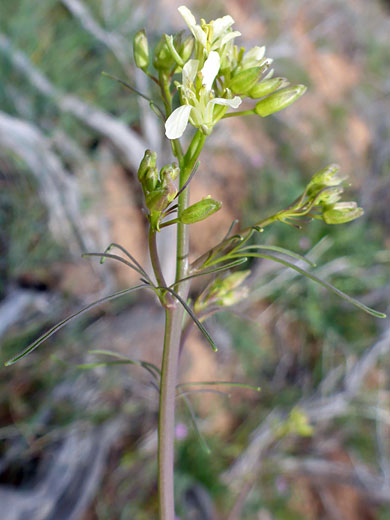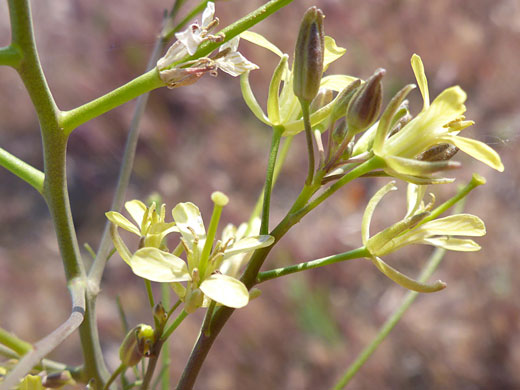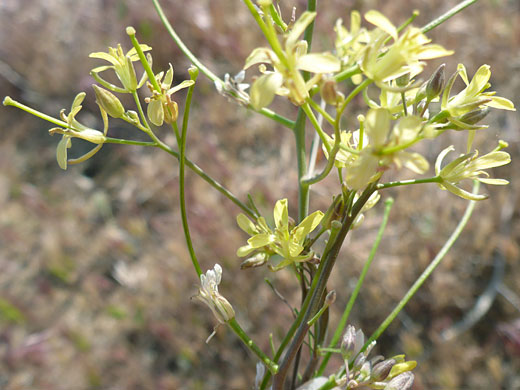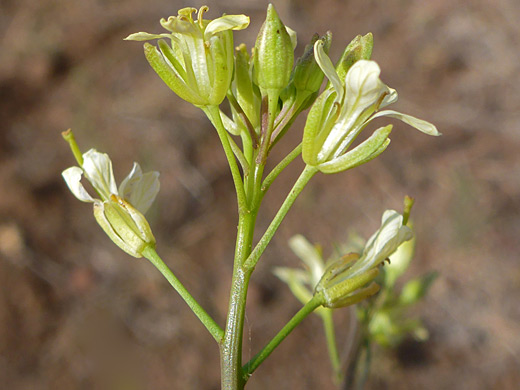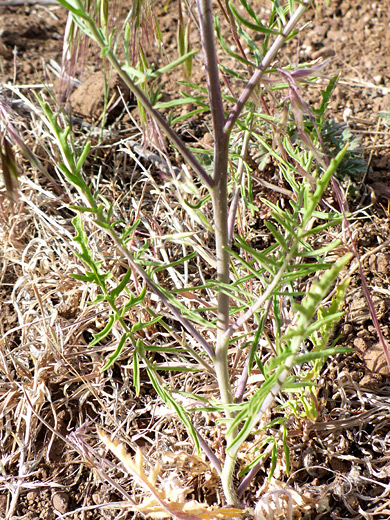
Flowers and buds of sisymbrium altissimum, along the Whiterocks Trail in Snow Canyon State Park, Utah
Common names:
Tall mustard, tall tumblemustard, Jim Hill mustard
Family:
Scientific name:
Sisymbrium altissimum
Main flower color:
Range:
All the Western states except Texas and the southern Great Plains (non native)
Height:
Up to 4 feet
Habitat:
Roadsides, fields, grassland; sea level to 9,000 feet
Leaves:
Up to 5 inches long; alternate, lanceolate to oblanceolate; divided into narrow lobes
Season:
April to September
Originating in Europe, sisymbrium altissimum has spread across most of the Western states in the US, often seen alongside roads and in other disturbed areas. Leaves are long and compound, pinnately divided into narrow lobes; those at the base and along the lower stem are themselves lobed, or toothed, while leaves higher up the stem are narrower, often threadlike, and have entire edges. The stems are tall and stout, and are sparsely covered with stiff hairs towards the base, becoming hairless above. Stems branch freely, mostly along the upper half.
Flowers are produced in branched, open clusters, and the plant has a long blooming period, from spring all through summer. The four short, narrow, oblong, greenish yellow sepals are spreading to ascending, while the four non-overlapping yellow petals are longer, spatulate in shape, and bent at the midpoint; the upper part is angled away at about 90 degrees, exposing the style and stamens.
Flowers are produced in branched, open clusters, and the plant has a long blooming period, from spring all through summer. The four short, narrow, oblong, greenish yellow sepals are spreading to ascending, while the four non-overlapping yellow petals are longer, spatulate in shape, and bent at the midpoint; the upper part is angled away at about 90 degrees, exposing the style and stamens.
All Contents © Copyright The American Southwest | Comments and Questions | Contribute | Site Map

